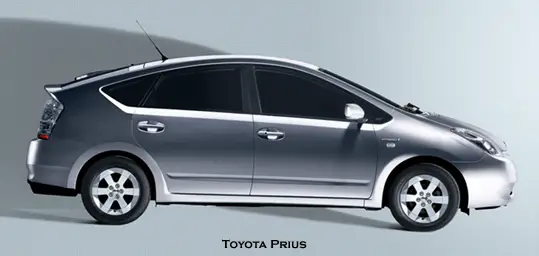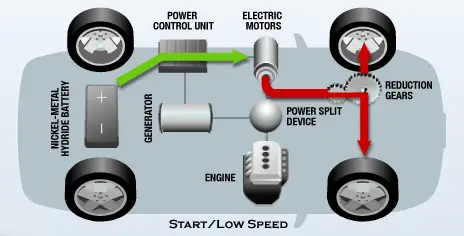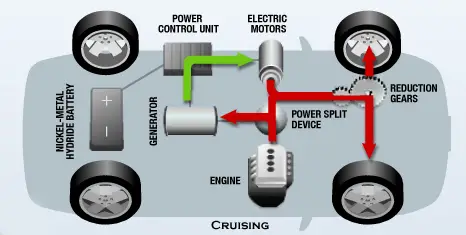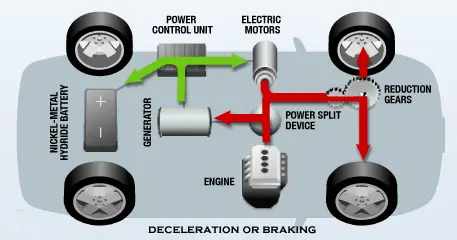What is a Hybrid Electric Vehicle?
“Hybrid electric vehicles (HEVs) use both electricity and hydrocarbon fuels to provide motive power, but the vehicle’s sole energy source is the hydrocarbon fuel. Relative to conventional vehicles in heavy urban traffic, HEVs can achieve around 50% better fuel economy, achieved by the regenerative braking and turning off their internal combustion engine when the vehicle is stopped or moving slowly. In open highway driving these benefits matter little, so a HEV will gave fuel consumption similar to an otherwise comparable conventional vehicle.
Hybrid-electric vehicles come in two flavours: parallel and series. In parallel HEVs, both the internal combustion engine and electric motors drive the wheels; usually the electric motor and internal combustion engine drive the same trans axle. The Toyota Prius is the familiar example.
In series HEVs, the internal combustion engine only drives a generator, which supplies power to batteries. The wheel drive motors are supplied only from the batteries or other onboard storage. The GM Volt will be a series PHEV [ Plug-in Hybrid Electric Vehicle ].” (Energy News, Official Journal of The Australian Institute of Energy, Volume 25 Number 4, December 2007, www.aie.org.au )

Toyota Prius Hybrid Electric Vehicle
The Toyota Prius is a hybrid electric vehicle developed and manufactured by the Toyota Motor Corporation. The Prius first went on sale in Japan in 1997, making it the first mass-produced hybrid vehicle. It was subsequently introduced worldwide in 2001. According to the United States Environmental Protection Agency, the 2008 Prius is the most fuel efficient car sold in the U.S., achieving 46 mpg. According to the UK Department for Transport, the Prius is tied with the diesel Minin Cooper D as the second least CO2-emitting vehicle behind the Volkswagen Polo 1.4 TDI.
At the centre of Toyota’s hybrid technology is the Hybrid Synergy Drive. This system makes intelligent use of a vehicle’s electric motors and gas/petrol engine to take advantage of the key attributes of the two power sources to ensure that the car operates at optimum fuel efficiency.

1. At start-off/low-speeds, Hybrid Synergy Drive runs the car on the electric motors only, since the gas/petrol engine does not perform efficiently. A gas/petrol engine cannot produce high torque in the low r.p.m. range, whereas electric motors can – delivering a very responsive and smooth start.

2. However, the gas/petrol engine is quite energy efficient for cruising. Power produced by the gas/petrol engine is used to drive the wheels and also the generator to provide power to the electric motors or to charge the battery. By making use of the engine/motor dual powertrain, the energy produced by the gas/petrol engine is transferred to the road surface with minimal loss.

3. Under deceleration or braking, Hybrid Synergy Drive uses the car’s kinetic energy to let the wheels turn the electric motors and recover regenerative energy to recharge the battery. Energy that is normally lost as friction heat under deceleration is converted into electrical energy, which is recovered in the battery to be reused later.

